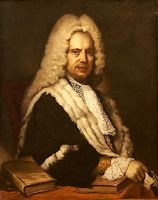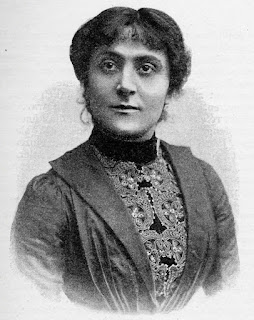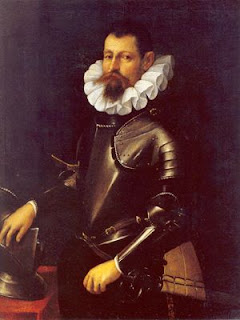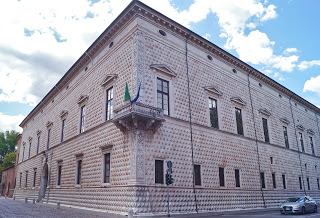NEW - Alice Barbi - singer
Mezzo-soprano who became close friend of Brahms
Alice Barbi, who enjoyed a short but successful career as a singer after showing a talent for the violin from an early age, was born on this day in 1858 in Modena. An accomplished mezzo-soprano famed for her sweet, velvety tone, Barbi performed in London, St Petersburg, Berlin and Vienna as well as in her native Italy. She is also known for her friendship with the celebrated German composer Johannes Brahms. The two met shortly after Barbi had performed in Vienna for the first time in 1888. Brahms was said to be captivated by both her voice and her beauty and they soon began to meet regularly for dinner. Their relationship, which lasted until his death in 1897, was never more than platonic, although the composer - 25 years’ her senior - is said to have confessed to friends that she was the only woman he had met in his later years he would have liked to marry. Barbi’s love of music was passed on by her father, Enrico, who was a violin teacher and tutored Alice so well that she was able to make her public debut on the instrument at the age of seven. The family moved to Egypt but when Alice returned to Italy she enrolled at the Conservatorio Giovanni Battista Martini in Bologna. Read more…
__________________________________________________________________
Francesco Scipione – playwright
Erudite marquis revitalised Italian drama
Dramatist Francesco Scipione, marchese di Maffei, was born on this day in 1675 in Verona. His most famous work was his verse tragedy, Merope, which attempted to introduce Greek and French classical simplicity into Italian drama. This prepared the way for the dramatic tragedies of Vittorio Alfieri and the librettos of Pietro Metastasio later in the 18th century. After studying at Jesuit colleges in Parma and Rome, Scipione went to fight on the side of Bavaria in the War of the Spanish Succession. He saw action in 1704 at the Battle of Schellenberg, near Donauworth, when his brother, Alessandro, was second in command at the battle. In 1710, Scipione was one of the founders of an influential literary journal, Giornale dei letterati, a vehicle for his ideas about reforming Italian drama. He founded a later periodical, Osservazioni letterarie, to promote the same cause. Scipione spent time studying the manuscripts in the Royal Library at Turin and arranged the collection of objects of art which Charles Emmanuel, Duke of Savoy had brought from Rome. He also travelled extensively in France, England, the Netherlands and Germany. Read more…
________________________________________________________________
Iolanda of Savoy - banished princess
Sister of Italy’s last monarch lived quiet life in seaside villa
Princess Iolanda of Savoy, the eldest daughter of Italy’s wartime king Vittorio Emanuele III, was born on this day in 1901 in Rome. Along with the other members of the Italian royal family, she left the country in 1946 after a referendum over whether to turn Italy into a republic gained the support of 54 per cent of those who voted. The new constitution specifically banned the male heirs of the House of Savoy from setting foot on Italian soil. Her brother, Umberto II, who had been made king when his father abdicated in May 1946, shortly before the vote, had the crown for just 27 days. He left for Portugal, never to return to his homeland. The decision to send male members of the family into exile was essentially the new republic’s punishment for Vittorio Emanuele having allowed the Fascist leader Benito Mussolini to run the country as a dictator. Vittorio Emanuele, who was king for 46 years, was tainted in particular by his approval of Mussolini's anti-semitic race laws by which all Jewish students were expelled from schools and Jews were banned from public office and forbidden to marry outside their race. Read more…
________________________________________________________________
Francis V – Duke of Modena
Jacobite claimant was forced to flee his own duchy
The last reigning Duke of Modena, Francis V, was born on this day in 1819 in Modena. He was the son of Francis IV of Modena and Princess Maria Beatrice of Savoy. After the death of his mother in 1840, Francis was considered by Jacobites to be the next legitimate heir to the thrones of England, Scotland and Ireland. He succeeded as Duke of Modena in 1846 on the death of his father and also held the titles of Archduke of Austria and royal Prince of Hungary and Bohemia. During the 1848 revolutions in Italy, Francis was forced to flee from Modena after an uprising, but he was restored to his duchy backed by Austrian troops the following year. He had to flee again in 1859 after the duchy was invaded by the armies of France and Piedmont. In March 1860, the new King of Italy, Victor Emmanuel II, ordered Modena to be incorporated into his new kingdom. Francis went to live in Vienna and died there in 1875. After his death, his niece, Maria Theresa of Austria Este, became the new Jacobite claimant. The Duchy of Modena and Reggio was an Italian state from 1452 to 1859. Modena has now become famous as the birthplace of opera singers Luciano Pavarotti and Mirella Freni. Read more…
Home


























